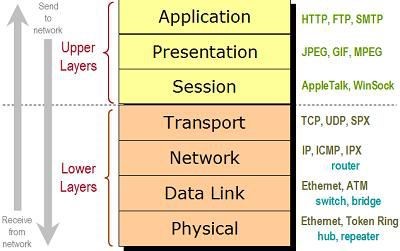The “Logical” Solution
What amazes me about technology is that it is truly unpredictable. Who would have thought that we can make a device that can process 600 billion operations per second and still fit in my pocket? Or just as amazing, devices that can intelligently learn through experiences and then make choices on our behalf? It is precisely these new innovations that spur new businesses and industries that take full advantage of the advances. At the same time, leaving existing, legacy businesses perplexed on how to make good business decisions to stay competitive and relevant. With all of these “unknown” variables it forces businesses to go back to the very roots of technology. That is lean on “logic” to make the good solid decisions.
Here is a classic example of “logic” in the context of compute…
For those of us that grew up on “Depeche Mode” and “The Police”, would remember the OSI model. This table was drilled into my head and became second nature to me. Because I knew this logical concept, it made me a good troubleshooter. It is, and still is the basis of everything I needed to know about IT. It was also what I needed to know to pass the A+ and numerous other certifications.
But from a logic perspective, we have to examine this model a little closer. Within each layer, there are different technologies and classified accordingly. Let’s take the “Physical” layer for example. Old hubs and repeaters from the 80’s are now replaced with routers and core switches. In the “Network” layer, old Novell IPX is replaced with IPv6. My point here is that the OSI Model does not go out of style; No matter how computing changes or what hardware we use. But what has changed is who is taking ownership and management the different technologies in each of the layers. The Amazons and Googles of the world is taking over management and ownership of these layers so we don’t have to.
With this trend, today’s computing is now focused in the “Presentation” and “Application” layers. Apps and hosted apps with new hardware and mobile platforms are driving this shift. Truly revolutionary because from a business perspective, compute can be a subscription model for an elastic data center without the capital expenditure. It’s a win-win, but not so much for tech folks and hardware vendors.
The abstraction of the other layers below it is reducing the need for technical expertise. This does not make the other layer any less important, it is just managed. This takes all the fun out of having a datacenter to run… essentially, it is no longer cool or interesting. Bluntly speaking, nobody cares anymore. The Cloud computing, SaaS, XaaS and SDx (Software defined “x”) services lets companies “off-load” the entire stack and presents information without the headaches.
What does this shift mean for technical folks like us? It just means that we too have to make the shift up the stack and live in the “Application” and “Presentation” layers. We can either reinvent ourselves as Application experts with experience in infrastructure or we can go the way of the 69 Mustang as a distant memory. With the future becoming more and more “Cloudy”, being “Logical” is the best solution.











